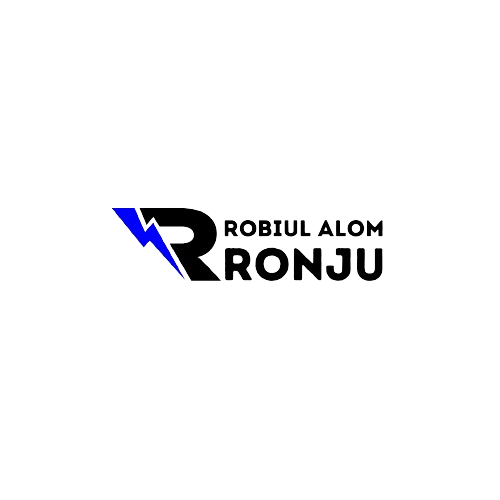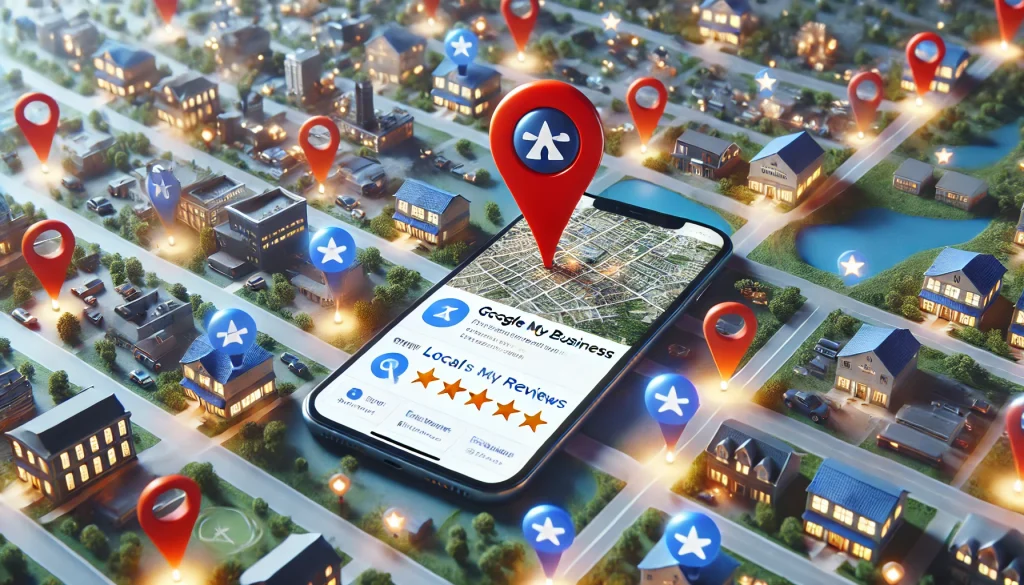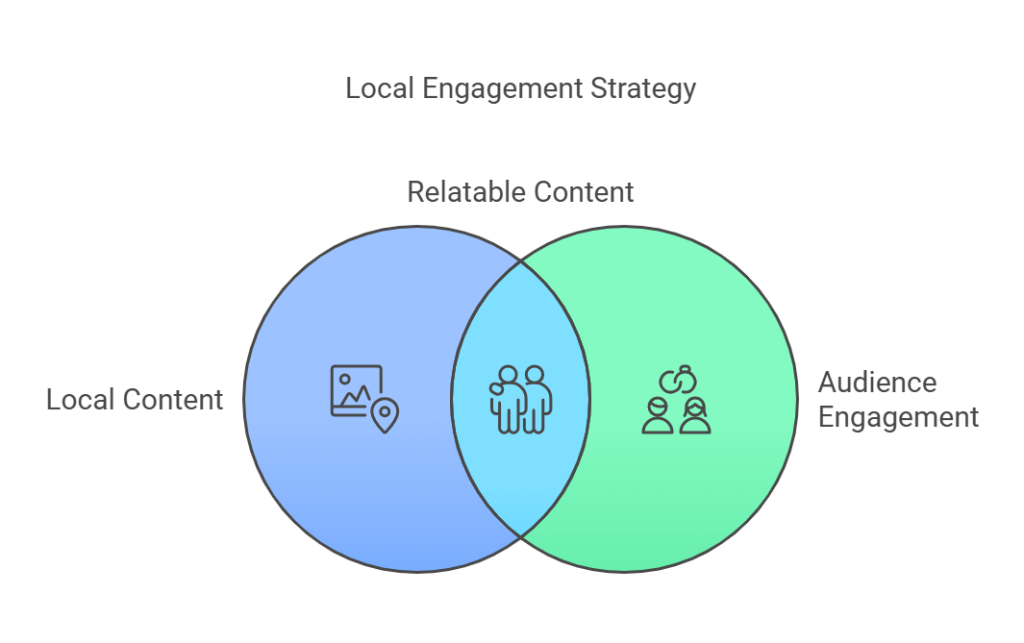 Introduction:
Introduction:
Is your gym in London showing up on Google when potential clients search for fitness options nearby?
In today’s digital age, local SEO is not just an option—it’s a necessity, especially for gyms in London. Local SEO helps businesses, including fitness centers, stand out to potential clients who are searching for services in their immediate area. For gyms, this can mean the difference between being discovered by a local fitness enthusiast or being lost in the sea of results.
With local SEO, gyms can boost their online visibility, drive more foot traffic, and ultimately increase membership sign-ups. If you’re not leveraging local SEO, you’re missing out on the opportunity to grow your business in London.
Why Local SEO is Crucial for Fitness Gyms in London
Over 78% of local mobile searches result in an offline purchase or visit – this includes gym memberships!
In a competitive city like London, local SEO is a game-changer for fitness gyms. When potential clients search for gyms nearby, they are often ready to make a decision—whether it’s signing up for a membership, attending a class, or booking a personal training session. If your gym doesn’t appear in these local searches, you’re missing out on valuable opportunities.
Local SEO allows gyms to reach individuals who are actively looking for fitness solutions in their area. This makes it more likely for them to visit your gym, inquire about memberships, and ultimately sign up.
For example, gyms that have optimized their local SEO strategy are often more visible on Google Maps and in local search results, leading to increased website traffic and foot traffic. Real-life examples from gyms that implemented local SEO strategies show how their online presence skyrocketed, leading to higher visibility, more inquiries, and a significant increase in memberships.
By focusing on local SEO gyms in London can tap into this highly targeted and motivated pool of clients, giving them a competitive edge in a crowded market.
Essential Local SEO Strategies to Rank Your Gym in London
Optimize Your Google My Business (GMB) Profile
Your Google My Business (GMB) profile is the cornerstone of local SEO for gym in London. It ensures your gym is easily discoverable by local searchers. Start by making sure that your gym’s name, address, phone number (NAP), and website URL are accurate and up-to-date. In addition to the basics, add high-quality photos of your gym, staff, and facilities, as well as detailed service listings, business hours, and promotions. A well-maintained GMB profile can drastically improve your chances of showing up in local search results and on Google Maps.
Target Hyper-Local Keywords for Maximum Impact
When targeting local clients in London, it’s crucial to use hyper-local keywords that reflect the specific areas around your gym. For example, instead of just “best gym,” use keywords like “best gym in East London” or “24/7 gym in North London.” These location-based terms help your gym show up in search results when potential clients are looking for fitness options close to them. By integrating these keywords into your website’s content, meta tags, headers, and body text, you can better align your website with the searches that local users are conducting.
Actionable Tips:
- Use tools like Google Keyword Planner or Ahrefs to find and target hyper-local keywords for your area.
- Naturally integrate these keywords into your website content without keyword stuffing to avoid penalties.
Leverage Local Reviews to Build Trust
Online reviews are one of the most effective ways to improve your gym’s local SEO. Not only do they impact your rankings, but they also play a vital role in establishing trust with potential clients. Encourage your current members to leave positive reviews on Google and Yelp. Responding to reviews, both positive and negative, shows prospective clients that your gym cares about customer feedback and is committed to providing top-notch service.
List Your Gym on Local Directories
Ensuring that your gym is listed on local directories is another key strategy for local SEO. Your NAP (Name, Address, Phone number) information must be consistent across all platforms to avoid confusion and improve local rankings. Getting listed on reputable local directories, such as Yelp, Thomson Local, and Yell.com, will help increase your visibility in local searches. Listings in trusted directories with strong domain authority also improve your gym’s credibility, which can positively impact your SEO rankings.
Step-by-Step Guide:
- Ensure that your NAP is consistent across all online platforms.
- Choose local directories with strong domain authority to improve your gym’s credibility and rankings.
- Regularly update your listings to keep them fresh and relevant.
By implementing these essential local SEO strategies, your gym can significantly increase its online visibility, attract more local clients, and stand out from the competition in London’s fitness industry.
On-Page SEO: Making Your Gym’s Website Irresistible to Local Clients
Craft Localized Content That Converts
To stand out in London’s competitive fitness market, it’s essential to create content that resonates with your local audience. Craft blog posts and pages that are directly relevant to your target market. For instance, “The Top 5 Gyms for Weight Loss in London” or “Why Londoners Choose Our Gym for Yoga Classes” not only provide valuable information but also use location-based keywords that help your gym rank for searches specific to your area.
SEO Tip: Ensure that your meta tags, page titles, and headers include these location-based keywords. For example, instead of simply “Yoga Classes,” use “Yoga Classes in North London.” This will help local clients find your content more easily and increase your chances of ranking higher on Google.
Local Landing Pages That Drive Action
Local landing pages are a powerful way to capture the attention of potential clients in specific areas of London. For example, creating a landing page for “Gyms in North London” will target individuals searching for fitness options in that specific neighborhood. Make sure the landing page is designed to convert visitors into members. This includes clear calls to action (CTAs), such as “Book Your Free Trial Today,” easy-to-find contact forms, and detailed class schedules that keep visitors engaged and encourage them to take action.
Build Authority with Local Backlinks
Local Links = Local Credibility
Backlinks play a crucial role in establishing your gym’s authority and improving your local SEO rankings. When your gym gets linked to from other trusted local sources, it signals to search engines that your gym is a relevant and credible business in the community. To build high-quality local backlinks, look for opportunities with local blogs, news outlets, and even local events. These backlinks not only improve your SEO but also build your reputation within the local community.
Quick Win: Reach out to local influencers, fitness bloggers, or local health-related websites for collaboration opportunities. Having these local voices linked back to your gym’s website can boost your authority and increase visibility among potential clients who trust local recommendations.
By focusing on localized content and building a strong network of local backlinks, you can significantly improve your gym’s on-page SEO and attract more local clients from specific neighborhoods in London.
Content Marketing Strategy to Engage London Gym-Goers
Create Hyper-Local Blog Posts and Videos
Creating content that resonates with your local audience is key to driving engagement and attracting gym-goers in London. Incorporate local landmarks, events, and trends to make your content more relatable. For example, blog posts like “Top 10 Gyms in London for Busy Professionals” or “How to Find the Best Crossfit Gym in London” will appeal to individuals searching for fitness options that are specific to their location and lifestyle.
Videos are also an excellent way to showcase your gym’s offerings and community vibe. Share workout tips, success stories, or local fitness challenges to connect with your audience on a deeper level.
Maximize Social Media for Local Engagement
Social media platforms like Instagram and Facebook are perfect for geo-targeting and engaging with potential clients in specific neighborhoods. Use geo-targeted ads to run promotions or offer discounts tailored to areas in London. For example, promote a free trial for people in specific boroughs or neighborhoods to attract those who live close by.
Behind-the-scenes content, client success stories, and highlights of your gym’s local involvement (such as charity events or fitness challenges) can help foster trust and strengthen your connection with the local community. The more authentic and localized your social media content is, the better it will resonate with potential clients.
Track Your Success: How to Measure Your Gym’s Local SEO Impact
Essential Local SEO Metrics to Watch
To ensure that your local SEO efforts are paying off, it’s important to track the right metrics:
- Local Rankings: Monitor how your gym ranks for local keywords (e.g., “best gym in East London”). Tracking local keyword rankings will help you understand how well your SEO strategy is working in your targeted areas.
- Website Traffic: Track how many visitors come to your site from London-based searches. Use tools like Google Analytics to measure where your traffic is coming from and how users engage with your site.
- Membership Conversions: Ultimately, the goal of SEO is to convert website visitors into paying members. Track how well your SEO efforts are translating into gym sign-ups and memberships.
Tools to Supercharge Your SEO Efforts
To effectively track your local SEO performance and gain insights into areas for improvement, use these essential tools:
- Google Search Console: This free tool helps you track how your gym appears in Google search results, providing data on your local search performance and identifying issues that might affect your rankings.
- Ahrefs: Use Ahrefs to analyze your backlink profile, track keyword rankings, and research competitors to fine-tune your SEO strategy.
- BrightLocal: This tool is specifically designed to monitor local SEO performance, offering features like local search rank tracking, citation audits, and review monitoring.
Conclusion
Local SEO is an essential tool for gyms in London looking to stand out in a competitive fitness market. By enhancing your visibility, building trust within your community, and attracting more local clients, you can ensure that your gym thrives in the bustling London fitness scene.
By following the strategies outlined in this guide—ranging from optimizing your Google My Business profile to leveraging local backlinks and creating hyper-local content—you’ll be able to take your gym’s local SEO to the next level and see tangible results in membership growth and online engagement.
Ready to boost your gym’s local visibility? Contact us today for a free SEO audit and get started on attracting more clients from your area!
With these proven tactics, your gym will stand out in London’s crowded fitness market and become a top destination for local fitness enthusiasts.
Frequently Asked Questions (FAQ)
What is local SEO and how does it benefit my gym in London?
Local SEO is the practice of optimizing your gym’s online presence to rank higher in local search results. It helps you attract local clients by ensuring that your gym appears when potential members search for fitness services nearby. Local SEO can boost foot traffic, increase online visibility, and drive membership sign-ups.
How long does it take to see results from local SEO for my gym?
The time it takes to see results from local SEO can vary, but typically it takes 3 to 6 months to start noticing significant improvements in local search rankings and website traffic. However, consistency and ongoing optimization are key to long-term success.
How do I optimize my Google My Business profile?
To optimize your GMB profile, ensure that your gym’s name, address, phone number (NAP), and website URL are accurate and up-to-date. Add high-quality photos, a detailed description of your services, business hours, and special promotions. Encourage satisfied members to leave positive reviews to boost credibility.
What are hyper-local keywords and why should I use them?
Hyper-local keywords are location-specific search terms that include neighborhood names or landmarks (e.g., “best gym in North London”). Using these keywords helps your gym rank higher for searches from people living in or near your area, driving more targeted traffic to your website.
How can I track the success of my local SEO efforts?
You can track your local SEO success by monitoring key metrics like local keyword rankings, website traffic from local searches, and membership conversions. Tools like Google Search Console, Ahrefs, and BrightLocal can help you measure and improve your gym’s local SEO performance.





